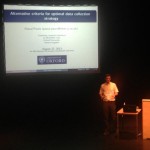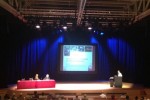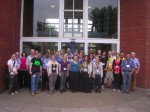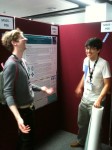In celebration of the Bragg centenary, a short animated film has been released which details the journey of X-ray crystallography from the work of Max von Laue right up to the present day. The film was produced for the Royal Institution as part of the Ri Crystallography Collection
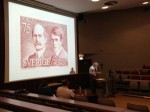 This year the European Crystsallographic Meeting was hosted in the UK for the first time since 1977. The meeting at the University of Warwick co-incided with the Bragg Centenary and included a fantastic collection of historical artefacts associated with the Braggs including scientific instruments, models, letters, portraits and notebooks organized by Mike Glazer and Pam Thomas.
This year the European Crystsallographic Meeting was hosted in the UK for the first time since 1977. The meeting at the University of Warwick co-incided with the Bragg Centenary and included a fantastic collection of historical artefacts associated with the Braggs including scientific instruments, models, letters, portraits and notebooks organized by Mike Glazer and Pam Thomas.
Contributions originating from Chem. Cryst. included:
Richard I. Cooper
Space groups and symmetry (ECACOMSIG Computing School lecture and workshop)
Pascal Parois
Alternative criteria for optimal data collection strategy (Talk in the Photocrystallography session)
Kirsten Christensen
Molecular Modulated Structures: Rare Today, Ubiquitous Tomorrow? (Talk in Aperiodic Crystals: Structure, Dynamics and Magnetism session)
As part of the Bragg Centenary Celebrations, Melvyn Bragg and his guests discussed the history of crystallography, the study of crystals and their structure on “In Our Time” on BBC Radio 4. His guests were Prof. Judith A. K. Howard (University of Durham), Dr. Christopher Hammond (University of Leeds) and Prof. Mike Glazer (University of Oxford).
The program began with the work of Johannes Kepler in the 17th century, and focussed on the work of the father-and-son team the Braggs in 1912. It also covered aspects of the the work of the German physicist Max von Laue who had proved that X-rays are a form of light waves and that it was possible to scatter these rays using a crystal and some of the most significant scientific findings of the last century – such as revealing the structure of DNA.
The program is available on line from the “In Our Time” website.
